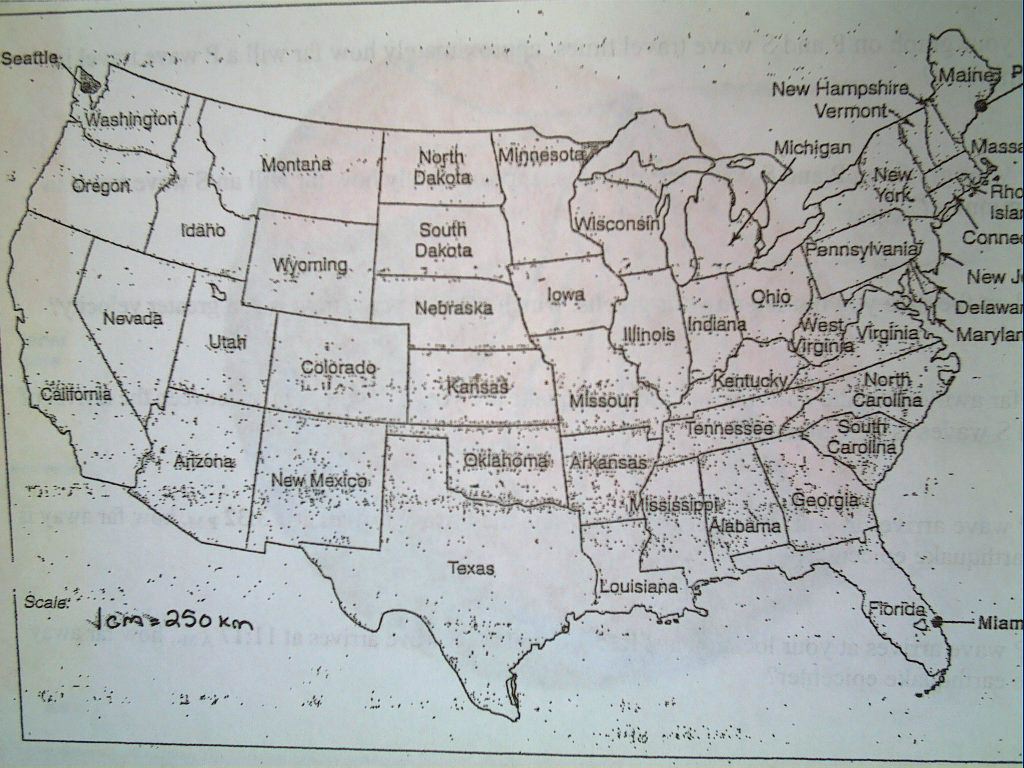SEARCHING FOR CHAOS IN RAINFALL AND TEMPERATURE RECORDS –
2 SEARCHING DATABASES USING WILD CARDS TRUNCATION & PHRASE4 C2 RECAP TRANSFERS VOYAGER SEARCHING CALL NUMBER
6 USING FILTERS LITERATURE SEARCHING CONDUCTING A TOPICBASED
ADVANCED LITERATURE SEARCHING TRAINING – JULIE GLANVILLE YORK HEALTH
BUILDING FRESHMAN SCHEDULES PRACTICE SEARCHING THE SCHEDULE OF
CHAPTER 3 SEARCHING FOR STUDIES 1 THIS
Searching for Chaos in Rainfall and Temperature Records – a Nonlinear Analysis of Time Series from an Experimental Basin
< and its nearest neighbour, and L’(tk) is the evolved length of L(tk-1) at time tkBefore computing the largest Lyapunov exponent, the dimension d of the phase space has to be determined. In this study the dimension was computed using the false nearest neighbors method. This enables the determination of the dimension in which the attractor is unfolded (Kennel et al., 1992).
Results and discussion
Precipitation and temperature data from the climatic station Jizerka, measured in 30 minute time steps have been analysed. The precipitation series contains 7500 points: from 28th May till 31st October 1997, and the temperature series has 17520 points: from 1st November 1997 till 31st October 1997.
The results are summarized in Table 1. By means of the average mutual information method the time delay was determined. It is six times higher than the sampling interval for the precipitation (180 min), and seventeen times higher than that for temperature (510 min).
TABLE 1 Time lag phase space dimension d and global Lyapunov exponents i for precipitation and temperature time series
Variable |
min] |
n |
1 |
2 |
3 |
4 |
5 |
6 |
7 |
8 |
9 |
|
Precipitation |
180 |
9 |
n.d. |
5.76 |
3.94 |
2.49 |
1.24 |
2.11 |
1.53 |
0.15 |
-0.63 |
|
Temperature |
510 |
5 |
0.62 |
0.42 |
0.21 |
-0.08 |
-0.76 |
- |
- |
- |
- |
The dynamic model needed to describe the data has 9 dimensions for precipitation and 5 for temperature. This indicates the presence of more degrees of freedom in the system governing the precipitation series, than in that governing temperature series.
The first Lyapunov exponent for precipitation data is not available, as its computation is mathematically not defined. In addition to this, the sum of the remaining 8 exponents is unrealistically high (16.59). However this sum should be negative as required for a realistic dissipative system. These problems could be due to a large number of zeros (intervals with no precipitation) in the series. High intermittence of rainfall occurence leads to 6636 zeros (88 % of data). As mentioned by Sivakumar (2000) this is a common problem in hydrological applications of chaos theory.
For temperature series all Lyapunov exponents are defined. The largest exponent is greater then zero. Therefore the deterministic chaos in the temperature series is proved. Two exponents are negative. The sum is larger than zero, however not so distinctly as in the case of precipitation. Therefore, an interpretation of the results has been allowed. The largest Lyapunov exponent 1 equals 0.62. So it is possible to predict the dynamics forward in time about
![]()
where Ts = 30 min (the sampling interval). None of the exponents is zero which would indicate that the underlying dynamics comes from a system of differential equations. However even in the case that the equations would be known, the predictions could not be better than the above computed predictability horizon.
Conclusions
The results presented in this paper can be summarized as follows:
1. Precipitation and temperature time series with sampling intervals of 30 minutes have been analyzed using methods to detect deterministic chaos.
2. Average mutual information was used to determine a nonlinear correlation time for both series.
3. Degrees of freedom operating in the observed data were determined by means of the false nearest neighbors method. 9 degrees of freedom were found to govern the dynamics of the precipitation series, and 5 that of temperature.
4. Local and global Lyapunov exponents have been computed. The highly intermittent nature of the rainfall causes problems with the interpretation of the Lyapunov exponents for the precipitation series. Realistic results have been obtained for the temperature series. Maximum Lyapunov exponent is larger then zero. This proves the chaotic dynamics of the system and hence a sensitive dependence on initial conditions.
5. A predictability horizon has been computed for temperature series.
References
Abarbanel, H. D. I., 1996: Analysis of observed chaotic data. Springer – Verlag, New York, 272 pp.
Fraser, A. M. and Swinney, H. L, 1986: Independent coordinates for strange attractors from mutual information. Physical Review A, 33(2), 1134-1140.
Henderson, H. W. and Wells, R., 1988: Obtaining attractor dimensions from meteorological time series. Advances in Geophysics, 30, 205-237.
Jayawardena, A. W. and Lai, F., 1994: Analysis and prediction of chaos in rainfall and stream flow time series. Journal of Hydrology, 153, 28-52.
Kennel, M. B., Brown, R. and Abarbanel, H. D. I., 1992: Determining minimum embedding dimension using a geometrical construction. Physical Review A, 45, 3403-3411.
Kurths, J. and Herzel, H., 1987: An attractor in solar time series. Physica D, 25, 165-172.
Palmer, A. J., Kropfli R. A. and Fairall, C. W., 1995: Signatures of deterministic chaos in radar sea clutter and ocean surface winds. Chaos, 5(3), 613-616.
Rodriguez-Iturbe, I., Febres de Power, B., Sharifi, M. B. and Georgakakos, K. P. 1989: Chaos in Rainfall. Water Resources Research, 25(7), 1989, 1667-1675.
Sharifi, M. B., Georgakakos, K. P. and Rodriguez-Iturbe, I., 1990: Evidence of deterministic chaos in the pulse of storm rainfall. Journal of the Atmospheric Sciences, 47(7), 888-893.
Sivakumar, B., Liong, S., Y. and Liaw, C., Y., 1998: Evidence of chaotic behaviour in Singapore rainfall. Journal of the American Water Resources Association, 34(2), 301-310.
Sivakumar, B., 2000: Chaos theory in hydrology: important issues and interpretations. Journal of Hydrology - in press.
Stehlík, J., 1999: Deterministic chaos in runoff series. Journal of Hydrology and Hydrodynamics, 47(4), 271-287.
Wolf, A., Swift, J. B., Swinney, H. L. and Vastano, J. A., 1985: Determining Lyapunov exponents from a time series. Physica D, 16, 285-317.
EXERCISES IN MBVINF 441094109410A SEQUENCE ALIGNMENT AND SEARCHING
FINDING THE RIGHT POSTGRADUATE COURSE IN THE UK RESEARCHING
GRADE 6 MODULE 3B UNIT 3 LESSON 2 RESEARCHING
Tags: chaos in, deterministic chaos, chaos, searching, records, rainfall, temperature
- RECLAIMED WATER TECHNICAL COMMITTEE DRAFT MEETING 7 SUMMARY PAGE
- 2008yiliodtufaaliyetraporu
- NOM PRÉNOM SALARIÉE ADRESSE CP COMMUNE LE MANS
- THỦ TỤC XÓA ĐĂNG KÝ PHƯƠNG TIỆN THỦY NỘI
- 2 DPTO ASESORIA JURÍDICA OF REFERENCIAS JURÍDICAS REPUBLICA DE
- SOLICITUD DE MODIFICACIÓN DE DATOS BANCARIOS (PERSONAL NO
- ELEMENTI DI STORIA DELL’INFORMATICA MILANO 0TTOBRE 2005 STORIA DELL’INFORMATICA
- INFORMACIÓN SOBRE EMPLEO EN INTERNET OFERTAS DE EMPLEO ECYL
- SELFEVALUATION LEONARDO DA VINCI PROJECT (20012005) EIN MODUL
- PREDLOG ZAKONA O POTVRĐIVANJU SPORAZUMA O RAZVOJNOJ SARADNJI IZMEĐU
- NETWORK THE INTERNATIONAL OF GROUPS PRO INFANTILE FEEDING IBFAN
- AANVRAAGFORMULIER VOOR EEN VERGUNNING INGEVOLGE DE WET VERONTREINIGING OPPERVLAKTEWATEREN
- Fragmentation of Small Carbon Clusters a Review k Béroff1
- SE BUSCAN NUEVAS VOCES PARA COMUNICAR LA CIENCIA
- UMOWA NR ……………OKREŚLAJĄCA ZASADY REALIZACJI BADAŃ I WYPŁACANIA STYPENDIUM
- KÖZTERÜLETHASZNÁLAT ÜGYMENET LEÍRÁSA KECSKEMÉT MEGYEI JOGÚ VÁROS ÖNKORMÁNYZATA KÖZGYŰLÉSÉNEK
- DIARI OFICIAL DE LA GENERALITAT DE CATALUNYA
- ACUERDO 042013 MEDIANTE EL CUAL SE CREA EL PROTOCOLO
- CHEM 1A TEST 4 OCT 14 2005 RYDBERG CONSTANT
- KENDRIYA VIDYALAYA SANGATHAN MR PUNE CLUSTER II 1ST
- ESCRITO DEL DIPUTADOA DE PERSONAL A CADA JEFEA DE
- TIPOS DE TEXTO LAS TIPOLOGÍAS TEXTUALES SON MÉTODOS
- JÕGEVAMAA 2020 A KABE MEISTRIVÕISTLUSTE ÜLDJUHEND 1 EESMÄRK VÕISTLUSTE
- REGLAS DE COMPETICIÓN DEL TROFEO RECTOR DE FÚTBOL SALA
- EVANJELICKÉ GYMNÁZIUM BANSKÁ BYSTRICA PRIPRAVIL MGR MAREK HANUSKA PREDMET
- 07%2081%2023%20%20UCSF%20MC%20Master%20120828
- READING ROMAN NUMERALS 1 I 11 XI 30 XXX
- PUBLIC FTAAECOMINF04COR1 9 JANUARY 1999 FTAA JOINT GOVERNMENTPRIVATE SECTOR
- PROGRAMUL OPERAŢIONAL CAPITAL UMAN AXA PRIORITARĂ 3 LOCURI DE
- TRYB PRZEPROWADZANIA CZYNNOŚCI W POSTĘPOWANIU O NADANIE TYTUŁU PROFESORA
INSS651 CH 12 DISTRIBUTED DATABASES DDB A DB PHYSICALLY
UCHWAŁA NR…………… RADY MIEJSKIEJ W MYŚLENICACH Z DNIA
MODELO DE ESCRITO DE RECLAMACIÓN DE ANULACIÓN DE CLÁUSULA
QUESTION FOR WRITTEN ANSWER E0091752011 TO THE COMMISSION RULE
SYLLABUS MISSISSIPPI VALLEY STATE UNIVERSITY DEPARTMENT OF HEALTH PHYSICAL
BEFRISTETER ARBEITSVERTRAG ZWISCHEN (NAME UND ADRESSE DES ARBEITGEBERS)
A LIST OF THE LATIN NAMES OF PLACES IN
 SOLICITUD DE ADMISIÓN A TRÁMITE DE PREDEFENSA (ART
SOLICITUD DE ADMISIÓN A TRÁMITE DE PREDEFENSA (ARTSIMONS COLLABORATION ON OCEAN PROCESSES AND ECOLOGY PRINCIPAL INVESTIGATOR
SZANOWNY UŻYTKOWNIKU PROSIMY O POŚWIĘCENIE KILKU CHWIL NA ZAPOZNANIE
 MULTIPLE CHOICE QUESTIONS (MCQ) TOPIC QUIZ EXCHANGE SURFACES
MULTIPLE CHOICE QUESTIONS (MCQ) TOPIC QUIZ EXCHANGE SURFACESZAŁĄCZNIK 2 TABELA ODNIESIEŃ EFEKTÓW KIERUNKOWYCH DO EFEKTÓW OBSZAROWYCH
 ARSIP NASIONAL REPUBLIK INDONESIA 8 ARSIP NASIONAL REPUBLIK INDONESIA
ARSIP NASIONAL REPUBLIK INDONESIA 8 ARSIP NASIONAL REPUBLIK INDONESIA E DICIÓN Nº 91 ALIMENTOS FORTIFICADOS Y ENRIQUECIDOS NUEVOS
E DICIÓN Nº 91 ALIMENTOS FORTIFICADOS Y ENRIQUECIDOS NUEVOS IMPRESO 3T AUTORIZACIÓN DE LA COMISIÓN ACADÉMICA RESPONSABLE DEL
IMPRESO 3T AUTORIZACIÓN DE LA COMISIÓN ACADÉMICA RESPONSABLE DEL I N THIS ACTIVITY YOU WILL LOOK AT HOW
I N THIS ACTIVITY YOU WILL LOOK AT HOWPART 629—ONSITE SOIL INVESTIGATIONS TESTING INTERPRETATIONS AND EVALUATIONS TABLE
INTRODUCTION TO SAP CONCUR THIS DOCUMENT SERVES AS
 MODUL 6 PEMECAHAN MASALAH MATEMATIK MODUL 6 PENYELESAIAN MASALAH
MODUL 6 PEMECAHAN MASALAH MATEMATIK MODUL 6 PENYELESAIAN MASALAH LAB 15 SPEED OF SEISMIC WAVES AND EARTHQUAKE EPICENTER
LAB 15 SPEED OF SEISMIC WAVES AND EARTHQUAKE EPICENTER